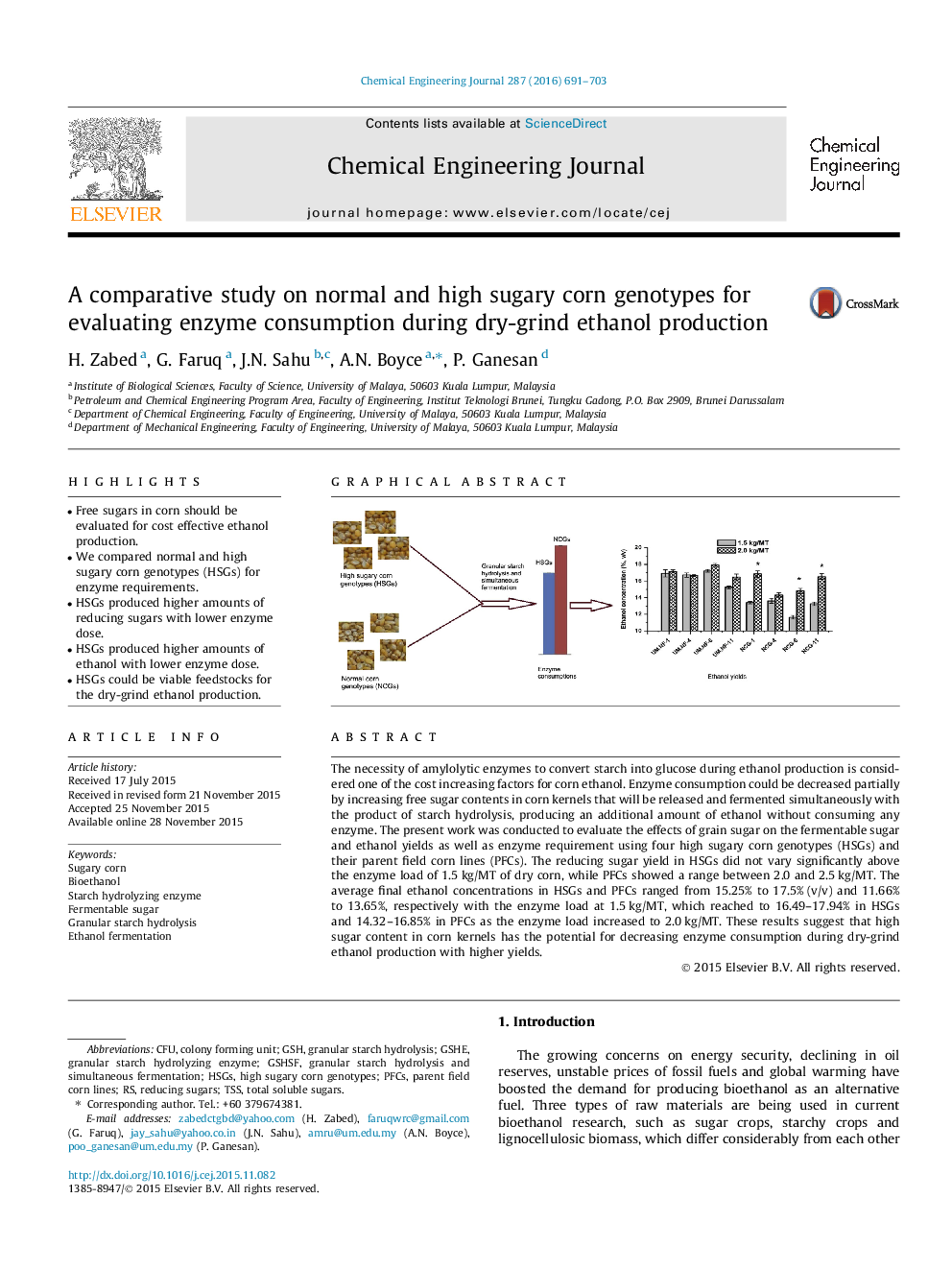| Article ID | Journal | Published Year | Pages | File Type |
|---|---|---|---|---|
| 145916 | Chemical Engineering Journal | 2016 | 13 Pages |
•Free sugars in corn should be evaluated for cost effective ethanol production.•We compared normal and high sugary corn genotypes (HSGs) for enzyme requirements.•HSGs produced higher amounts of reducing sugars with lower enzyme dose.•HSGs produced higher amounts of ethanol with lower enzyme dose.•HSGs could be viable feedstocks for the dry-grind ethanol production.
The necessity of amylolytic enzymes to convert starch into glucose during ethanol production is considered one of the cost increasing factors for corn ethanol. Enzyme consumption could be decreased partially by increasing free sugar contents in corn kernels that will be released and fermented simultaneously with the product of starch hydrolysis, producing an additional amount of ethanol without consuming any enzyme. The present work was conducted to evaluate the effects of grain sugar on the fermentable sugar and ethanol yields as well as enzyme requirement using four high sugary corn genotypes (HSGs) and their parent field corn lines (PFCs). The reducing sugar yield in HSGs did not vary significantly above the enzyme load of 1.5 kg/MT of dry corn, while PFCs showed a range between 2.0 and 2.5 kg/MT. The average final ethanol concentrations in HSGs and PFCs ranged from 15.25% to 17.5% (v/v) and 11.66% to 13.65%, respectively with the enzyme load at 1.5 kg/MT, which reached to 16.49–17.94% in HSGs and 14.32–16.85% in PFCs as the enzyme load increased to 2.0 kg/MT. These results suggest that high sugar content in corn kernels has the potential for decreasing enzyme consumption during dry-grind ethanol production with higher yields.
Graphical abstractFigure optionsDownload full-size imageDownload as PowerPoint slide
